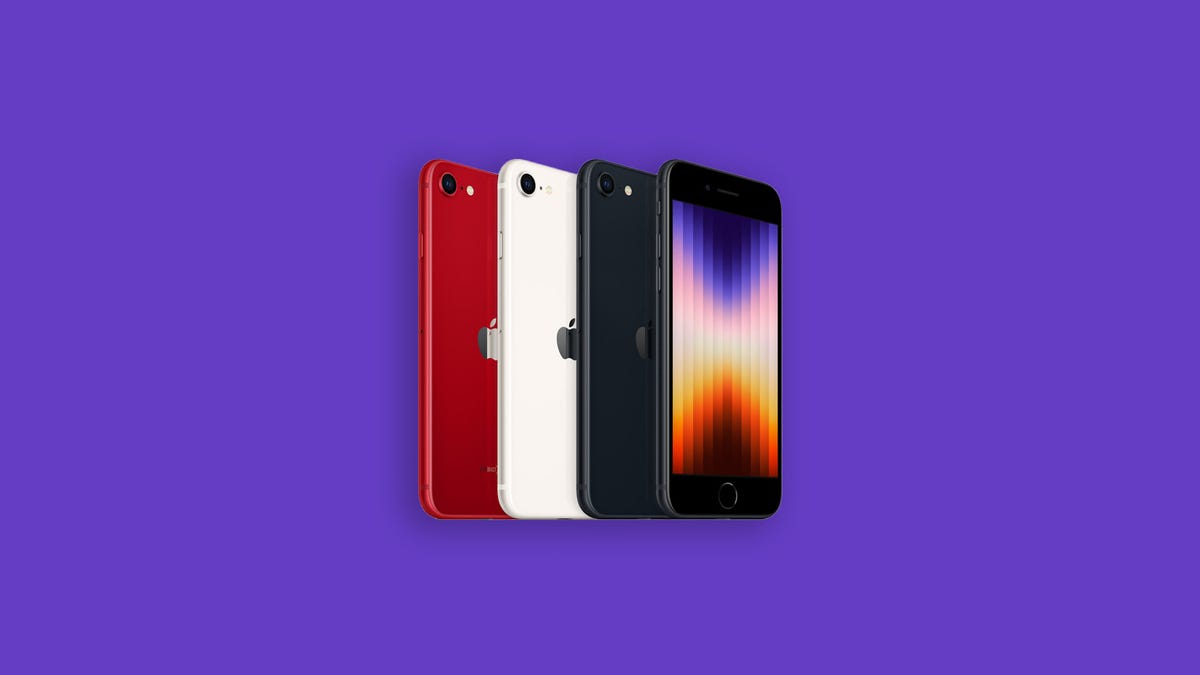 Why You Can Trust CNET
Why You Can Trust CNET iPhone SE 2022 Camera Upgrades Are Baked Into Its A15 Bionic Chip
The hardware hasn't changed, but that A15 chip could make for some neat photography upgrades.

Apple has taken the wraps off the latest iteration of its affordable iPhone SE ($429, £419, AU$719). The 2022 SE is physically identical to its predecessor -- complete with 4.7-inch display and the physical home button beneath the screen -- but it's now got 5G and the same powerhouse A15 Bionic chip found in Apple's iPhone 13 range. And while the camera setup stays the course with a single 12-megapixel rear lens, that new chip might make for some worthwhile photography boosts.
The physical camera setup hasn't changed between the previous iPhone SE and the new model, on paper at least. Both have 12-megapixel rear cameras with f/1.8 apertures, both can shoot video in 4K and both have 7-megapixel front-facing cameras. If you were hoping for a cheap iPhone with multiple lens options -- a super-wide or telephoto view -- you'll have to look instead towards the older iPhone 11 or the iPhone 12 Mini. You can see here how all those specs compare.
But much of Apple's success in the quality of its cameras comes from its software and processing and it's here that the A15 Bionic chip becomes the biggest camera upgrade. During its launch event, Apple explained that the A15 Bionic chip allows for improved computational photography, including the impressive HDR capabilities seen on the iPhone 13. Smart HDR 4, as it's called, merges different exposures for your subject versus the background, in theory allowing for more balanced portraits and more natural skin tones.
The 2020 iPhone SE had a generally solid camera.
Then there's Apple's Deep Fusion processing which uses "pixel-by-pixel processing to optimize texture, detail and noise" -- again, something that wasn't available with the older processor in the last model. You'll also find the Photographic Styles -- seen first on the iPhone 13 -- that allow you to more easily adjust color tones across your images, while Apple also says the A15 chip will help improve low-light video, too.
What you won't find are features like the ProRaw image format that allows for easier editing in apps like Adobe Lightroom, or the more recent ProRes video that's geared toward video pros. Both of these are reserved solely for the iPhone 13 Pro and Pro Max.
I'm yet to get my hands on the new iPhone SE so I'll have to wait and see how much that new chip improves the camera. It's certainly not a big upgrade and it's not going to give you the absolute best image quality around. But the previous SE camera was more than enough for everyday snaps and envy-inducing holiday shots, so I'm keen to see how much further the new model takes things. And I'm pleased to note that the new SE hasn't come with a significant price hike, which would have made the lack of major camera upgrades more difficult to justify.

